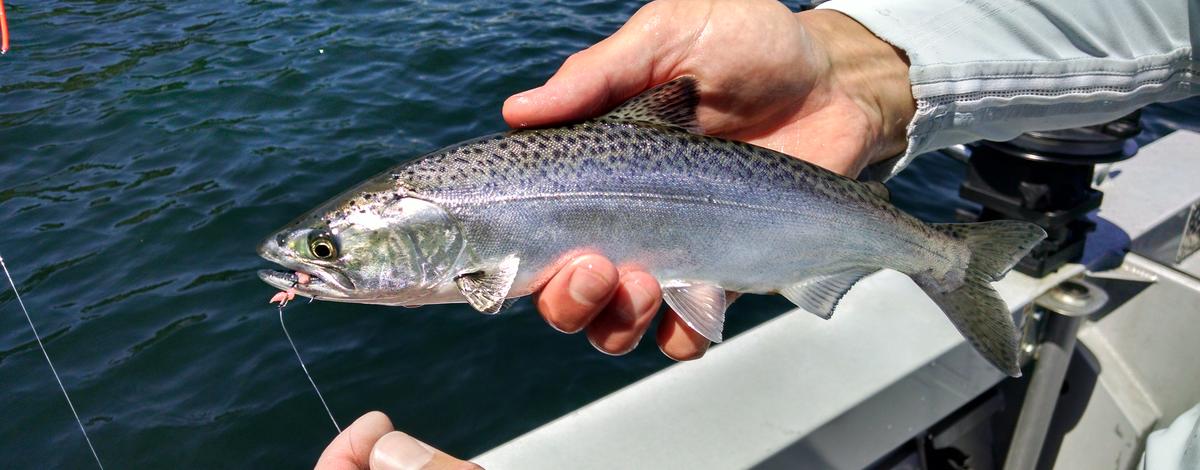
The chinook salmon first stocked in Spirit Lake in 2016 are reaching the 20-inch minimum size for harvest, adding an exciting, new consumptive fishery to the lake. These chinook are landlocked (they do not migrate to the ocean) but can still reach large sizes in waters with abundant kokanee. The chinook stocked from 2016-2018 are now 10-24 inches long and anglers were catching them through the ice in early 2019. As of the week of April 8, the ice was off Spirit Lake and chinook fishing is expected to improve.
The daily bag limit is 2 chinook and the minimum length limit is 20 inches. These regulations are consistent for all landlocked chinook in the Panhandle Region. The largest chinook in Spirit Lake were reaching the 24-inch mark, with more fish recruiting to the harvestable size class as temperatures warm and feeding picks up.
How anglers can get involved in the management of the Spirit Lake fishery
Spirit Lake is part of a statewide study to evaluate how hatchery chinook can be best used to improve certain fisheries around the state. The study is specifically aimed at learning 1) how chinook affect Spirit Lake kokanee and 2) the difference in growth, survival and catch rates of sterile versus fertile chinook.
Fisheries biologists are testing whether hatchery chinook can be used as a tool to improve the kokanee fishing in Spirit Lake. Kokanee often exist at a high density and small size in Spirit Lake. The added predation by chinook may result in a lower density but larger average size of kokanee—something desirable to anglers and fishery managers alike.
Sterile, or triploid, fish provide managers more control over the number of chinook in the lake. However in some systems, sterile hatchery fish don’t survive as well as fertile (diploid) fish. Managers are studying the difference between these two strains of hatchery chinook and are asking for anglers’ help. Similar studies are underway at Anderson Ranch, Lucky Peak and Deadwood reservoirs in South Idaho.
Anglers can get involved with the study by providing tissue samples from chinook they catch. Drop box sites on Spirit Lake have a sign with information and collection materials. Drop boxes can be found at the Spirit Lake and Maiden Rock public boat launches. Steps to provide samples:
- Catch a chinook from Spirit Lake. Chinook can be identified by a clipped adipose fin, black gum line, and oblong spots along the back.
- Clip a small portion of any fin from the fish, about the size of a hole punch. It does not matter whether you harvest the fish or not, a clip can still be taken.
- Place the fin clip in an envelope and keep it dry. Envelopes can be found at both drop box kiosks.
- Deposit the envelope in a drop box
Anglers are encouraged to take a few envelopes from drop box kiosks before heading out on the lake.
If you have questions or concerns contact Carson Watkins, regional fisheries biologist, at (208) 770-3768 or Carson.watkins@idfg.idaho.gov.

